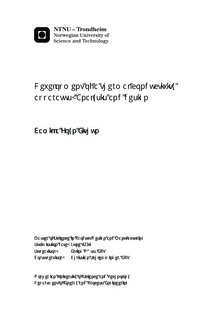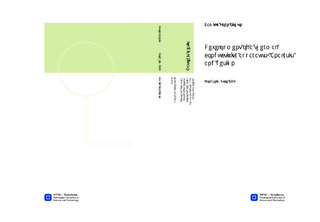| dc.description.abstract | This objective of this thesis has been to development and analysis a measurement apparatus designed to determine thermal conductivity of porous materials. A literature survey concerning available experimental techniques for thermal conductivity measurements was conducted. A steady state radial heat transfer method with cylindrical geometry and a centered heating element was found to be most suited technique for achieving accurate and reliable results. A side wall cooling arrangement was used to achieve desired cooling temperatures. To restrict the extent of the work, it was decided to only investigate heat transfer behavior at cryogenic temperatures. Test specimen with a thermal conductivity of 0.05 W/(m*K), (assumed to be the thermal conductivity of the materials to be tested in the apparatus) and a thermal conductivity of 0.01 W/(m*K) for the insulation components, were the ones chosen for investigations. The design process of the new apparatus, using the software COMSOL Multiphysics 4.2, was initiated by evaluating heat transfer behavior in a simple cylinder, containing a hollow heating element and the test specimen. Radial heat transfer was verified, hence, the design process proceeded. Extensive, step-wise analyses were conducted to evaluate heat transfer behavior as the complexity of the apparatus increased. Implemented elements such as insulation blocks, a heater support and three thermocouples proved to cause heat losses in the test section, which resulted in errors in the calculated thermal conductivities. Furthermore, an electric wire, supplying the heating element with current, was included in the model. In addition, the hollow heater was replaced by an aluminum oxide heater since such an element is to be used when building the apparatus. Unexpected results revealed critical heat transfer into the test section from the wire. This led to an investigation of the wire length to reduce such effects. Lastly, as a result of the analyses carried out, the overall error of the thermal conductivity measurements due to heat losses was determined. Dimensional drawings of the characteristic dimensions, as well as practical solutions for the final compilation of the apparatus, were suggested as the last step of the design process. It was of interest to estimate the overall uncertainty of the apparatus when all parameters effecting the measurements, were included. For this, a comprehensive uncertainty analysis was conducted and compared to previous work. Results showed that temperature recordings from the thermocouples placed in the mid-section of the test cylinder would provide the most reliable results for the determination of thermal conductivity in the test apparatus. | nb_NO |

